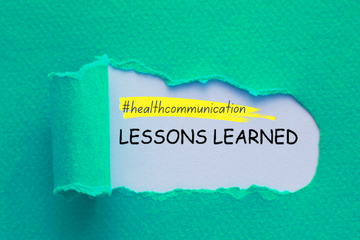Lessons learned: Use consistent directions to describe how things work

You’re reading Lessons Learned, which distills practical takeaways from standout campaigns and peer-reviewed research in health and science communication. Want more Lessons Learned? Subscribe to our Call to Action newsletter.
Communicating about health often involves explaining how products like vaccines work to make people healthier. The clarity of that explanation can be make or break. If you don’t understand how something works, you are probably less likely to trust and use it. Health professionals often use directional terms like “increase,” “decrease,” “boost,” and “reduce,” to describe how things work. For example, they might say “vaccines increase antibodies to boost your immune system’s ability to fight disease.” Or they might say “vaccines increase antibodies, which decreases the chances of getting sick.” In the first example, the directions for the cause and effect are consistent. But in the second, they aren’t. So does directional consistency matter?
A team at The University of Chicago Booth School of Business explored this question through a series of ten experiments that each involved between 601 and 1271 people. The experiments presented participants with descriptions of products that were either directionally consistent or inconsistent. Participants then rated their opinions on the products including how likely they thought it would work, would choose it, and would buy it. In some experiments, they also rated how easy it was to process the explanation.
What they learned: When the descriptions of how products work are directionally consistent, people thought the product was more likely to work and were also more likely to choose choose and buy it. The reason? People find directionally consistent explanations easier to process.
Why it matters: Health and science communicators can leverage lessons from product marketing to improve people’s understanding and uptake of scientific information.
➡️ Idea worth stealing: When you are describing how a product works, try to make sure that any directional language you use is consistent between cause(s) and effect(s). For example, to describe how an epi-pen works, try “an epi-pen boosts epinephrine levels which increases space in your airways” rather than “an epi-pen increases epinephrine which reduces swelling.”
What to watch: How health communicators incorporate more lessons from marketing research.


